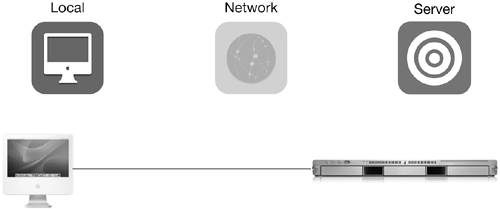Lesson 9. Accessing Network Services
In Lesson 8, "Networking Configuration and Troubleshooting," you learned how to configure a Mac OS X computer for network access, connect to a network, and troubleshoot networking issues.
Once your connection to the network is established, you are ready to access network services. This lesson addresses what's needed to access and troubleshoot connections to any network service, with specific attention to:
To access a service on another computer on your network, you must find the service, make the connection, and prove your identity. In the past, finding out where to connect was often haphazard and inefficient. Users had to get information from their system administrator or from other users, store it somewhere, and then remember where they stored the information when they wanted to connect. Today, computer software does most of that work for you, especially in Mac OS X. Most of the time, you can browse a list of available servers. Connecting to a service is also easy in Mac OS X. In most cases, you make a selection from a list and click. In a few cases, you might have to enter a computer name or address. Most network services require that you prove you are who you say you are, or authenticate, typically by providing a password. Mac OS X helps you manage your passwords so that you don't have to enter them over and over again, and also uses modern security methods to protect computers against unauthorized access. |
